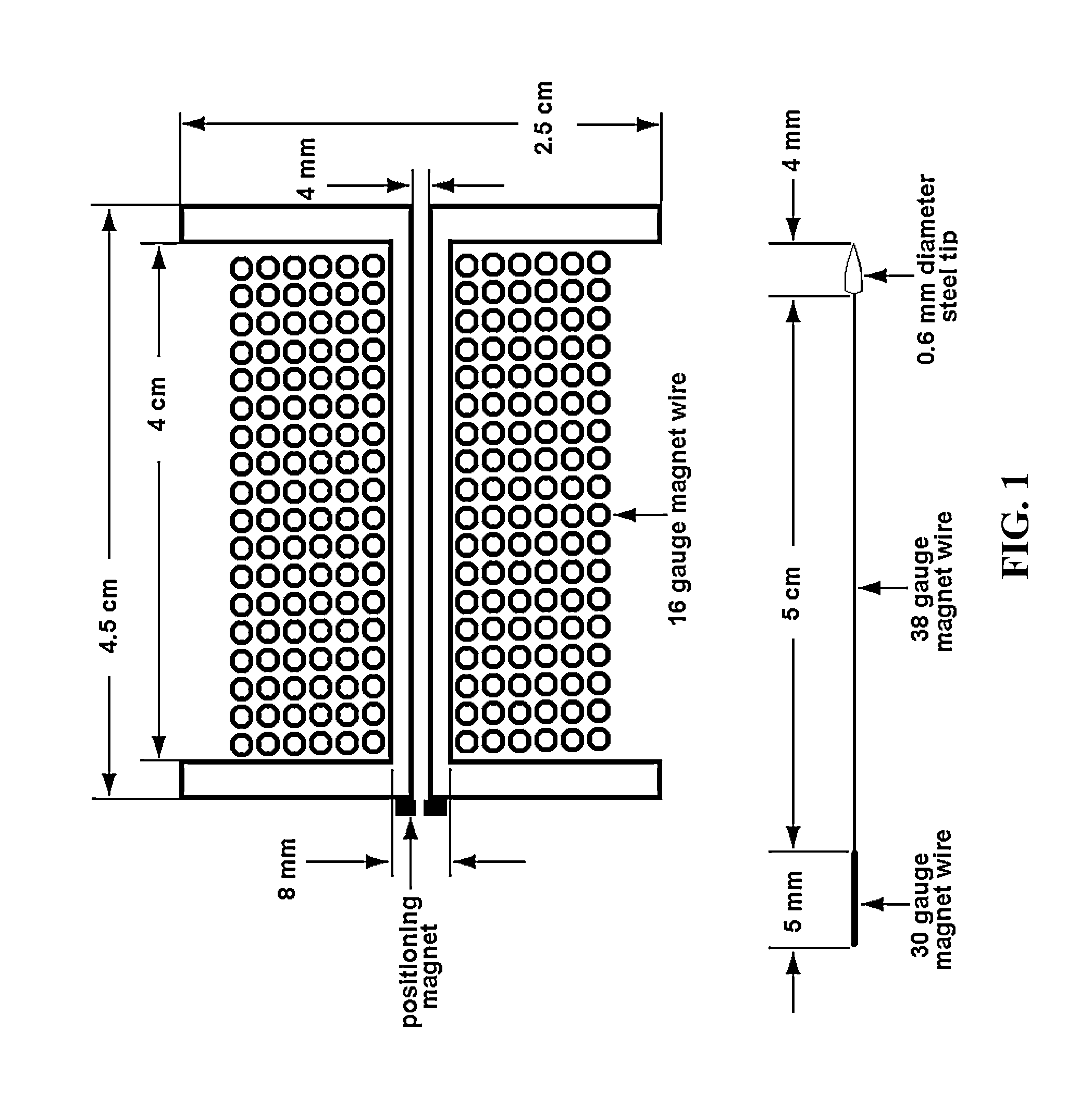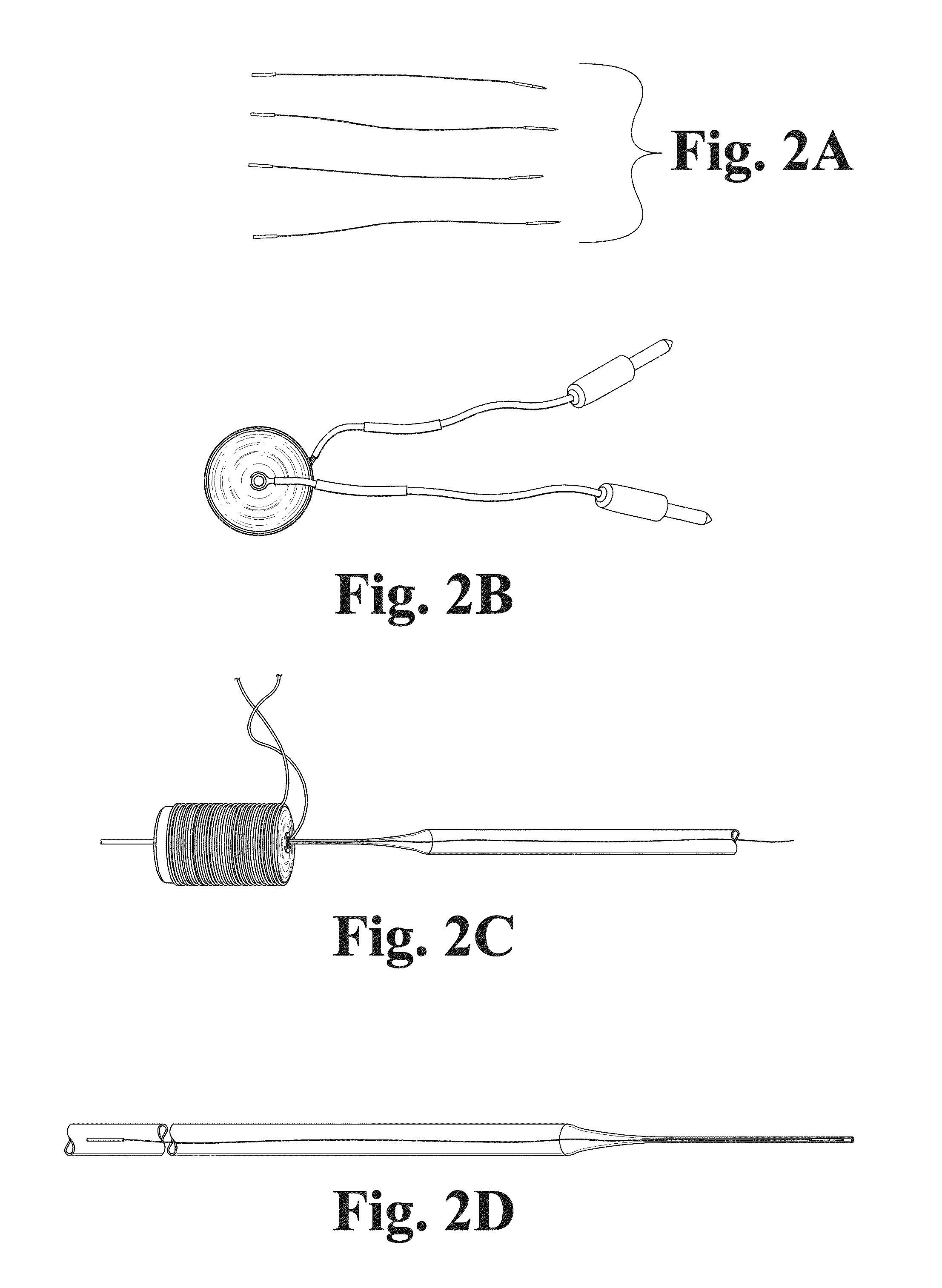Flexible neural probe for magnetic insertion
a neural probe and flexible technology, applied in the field of flexible electrodes used with neural tissues, can solve the problems of still limiting the functional lifespan of chronically implanted electrodes, sacrificing flexibility, and compromising the stiffness of silicon microelectrodes, so as to prevent buckling, discriminate single unit activity, and limited spatial resolution
- Summary
- Abstract
- Description
- Claims
- Application Information
AI Technical Summary
Benefits of technology
Problems solved by technology
Method used
Image
Examples
Embodiment Construction
[0027]The embodiments of the present invention described below are not intended to be exhaustive or to limit the invention to the precise forms disclosed in the following detailed description. Rather, the embodiments are chosen and described so that others skilled in the art may appreciate and understand the principles and practices of the present invention.
[0028]Referring to FIG. 1, a cross-sectional schematic of a prototype inductive coil and electrode constructed in accordance with certain aspects of the present invention is shown. Specifically, an inductive coil was constructed by wrapping 6 rows of 16 gauge copper heavy armored poly-thermaleze magnet wire (Belden) around a polyethylene spindle. The coil was measured to have an inductance of 110 μH and resistance of 118 mΩ. A small toroidal magnet was placed at one end of the coil to position the electrode prior to insertion, and a 9″ borosilicate glass Pasteur pipette (VWR) was inserted into the coil to act as the ejection tube...
PUM
 Login to View More
Login to View More Abstract
Description
Claims
Application Information
 Login to View More
Login to View More - R&D
- Intellectual Property
- Life Sciences
- Materials
- Tech Scout
- Unparalleled Data Quality
- Higher Quality Content
- 60% Fewer Hallucinations
Browse by: Latest US Patents, China's latest patents, Technical Efficacy Thesaurus, Application Domain, Technology Topic, Popular Technical Reports.
© 2025 PatSnap. All rights reserved.Legal|Privacy policy|Modern Slavery Act Transparency Statement|Sitemap|About US| Contact US: help@patsnap.com



